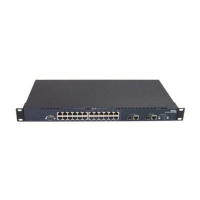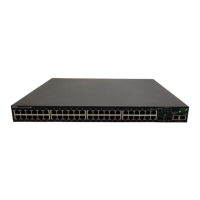350 BigIron RX Series Configuration Guide
53-1002253-01
SuperSpan™
12
Mixing single STP and multiple spanning trees
You can use SuperSpan in any of the following combinations:
• Customer and SP networks both use multiple spanning trees (a separate spanning tree in each
VLAN).
• Customer uses multiple spanning trees but SP uses Single STP (all STP-enabled VLANs are in
the same spanning tree).
• Customer uses Single STP but SP uses multiple spanning trees.
• Customer and SP networks both use Single STP.
• The following sections provide an example of each combination.
All the combinations listed above are supported when the boundary ports joining the SP SuperSpan
domain to the client spanning trees are untagged. For example, all these combinations are valid in
super aggregated VLAN configurations. If the boundary ports are tagged, you cannot use Single STP
in the client network in combination with multiple spanning trees in the SP SuperSpan domain.
The examples below are in super aggregated configuration scenarios.
Customer and SP use multiple spanning trees
Figure 36 shows an example of SuperSpan where both the customer network and the SP network
use multiple spanning trees (a separate spanning tree in each port-based VLAN).
FIGURE 36 Customer and SP using Multiple Spanning Trees
Both the customer and SP regions are running multiple spanning trees (one per port-based VLAN)
in the Layer 2 switched network. The customer network contains VLANs 10 and 20 while the SP
network contains VLANs 100 and 200. Customer traffic from VLAN 10 and VLAN 20 is aggregated
by VLAN 100 in the SP since the boundary ports, 2/1 on R100 and R200, are untagged members
of VLAN 100. By adjusting the bridge priority on VLANs 10 and 20, the customer can select a
different root bridge for each spanning tree running in the customer network.
tagged to multiple vlan
stp-boundary
untagged to vlan 100 (Super Aggregated VLAN)
Customer
Region
Provider
Region
Root bridge for VLAN xx
1/1
2/1
2/2
3/1
2/1
2/2
R
100
R
200
R
10
R
20
R xx

